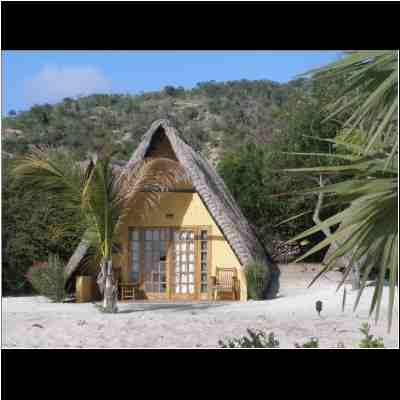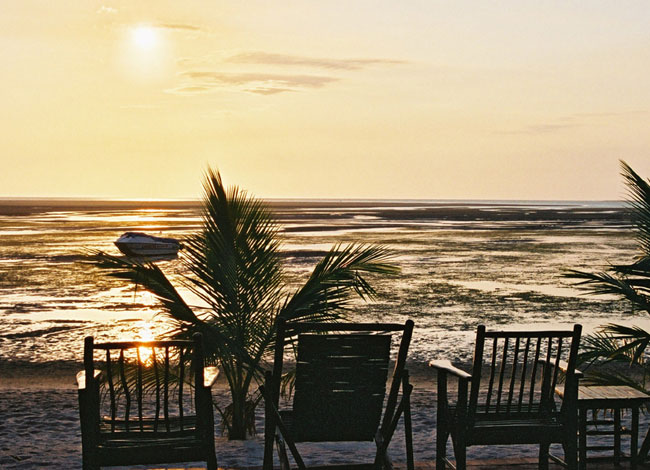Brindle Bass Ridge (North
Point)
This large reef has a maximum depth of 18 metres and
features impressive concentrations of snappers,
angelfish, rubberlips, brindle bass and reef sharks.
An unusual depression, The Toilet Bowl, is lined
with dazzling soft corals.
|
Potholes (North Point)
A series of shallow potholes at a depth of about 12
metres, this site can be dived only in flat
conditions. You fin from pothole to pothole and the
larger ones often shelter black-tail reef sharks.
Other potholes are lined with soft corals and have
interesting tunnels to explore. |
• Manta Ray Reef (North Point)
This is a flat reef at a maximum depth of 15 metres
where schools of fish such as crescent-tailed big
eyes and blue-banded snappers are regularly
encountered. The reef has spectacular concentrations
of anemones sheltering both nose-stripe and two-bar
clownfish. The reef is also frequented by green
turtles.
|
Rainbow Runner Reef (North
Point)
This reef has a maximum depth of 25 metres (on
spring high tide) where divers should concentrate on
watching the open ocean above the sea floor. Manta
(in season) and spotted eagle rays, potato and
brindle bass, kingfish, rainbow runner, green
jobfish and Zambezi sharks pass through this area.
The reef also has impressive accumulations of
green-tree and whips corals.
|
| Turtle Ridge (North Point)
Eine schmale Kante an einer Tiefe von 14
Metern, frequentiert durch Schildkröten und
Barracuda. |
Five-Mile Reef
Südostlich von Bazaruto, Zambezihaie |
Two-Mile Reef
Ein kurzes Wallriff, das eine schmale Führung
zwischen Bazaruto und Benguerra schützt. Sie ist für
seine ausgezeichnetenSchnorchelgründe innerhalb des
Riffs wie ein Aquarium .Das Tauchen erstreckt
sich zwischen sechs und 21 m. Der flach-erstklassige Rifff stützt eine bunte Verschiedenartigkeit der
harten und weichen Korallen, Kingfish; Barracuda;
Rotfeuerfische und Haifische und Manta |
• 4 Delphinarten werden regelmäßig gesehen
Buckelwale von Juli bis September,
Walhaie und Manta von April bis
Juli - Alle Arten von Meeresschildkröten und
die grösste Dugongpopulation im indischen Ozean |























